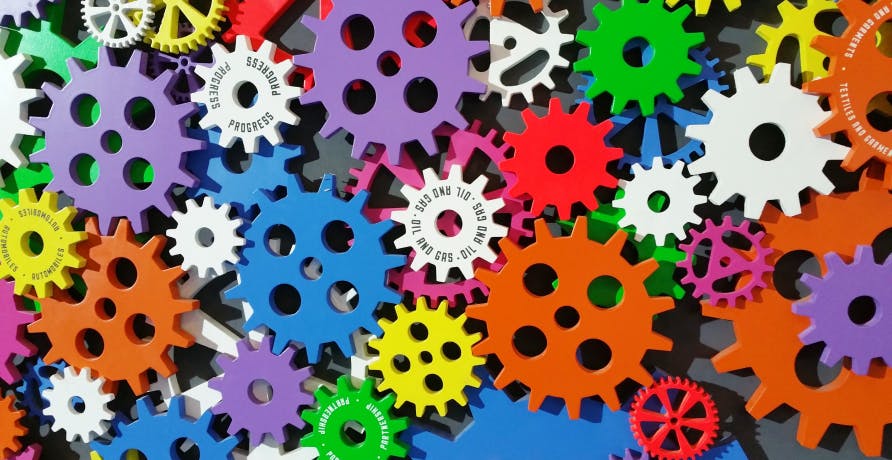
What are the 3 Pillars of Corporate Sustainability?
In this article, we'll explore what the 3 pillars of corporate responsibility are, why they're important, and how businesses can turn them into practical action.
ESG / CSR
Industries



Businesses around the world are becoming more aware of the importance of not just creating a sustainable company, but seeking to create a sustainable supply chain that doesn’t negatively impact the current good standing or efforts of a company trying to go green. A sustainable supply chain is becoming an essential component for any business looking to become more sustainable, seek new customers, and attract new investors.
👉 What are five characteristics of a sustainable supply chain, why is it important to work with sustainable suppliers, and how can various entities throughout a supply chain seek to become more sustainable?
For example, a supplier providing the hardware or batteries necessary to build a new computer is a part of the computer company’s supply chain – as is the factory which creates the computer batteries or hardware themselves.
Supply chains start with the companies that provide the raw materials and end when the product is transported to its final destination – such as when the Amazon delivery guy leaves a package at someone’s front door.
👉 The supply chain is the basis for all products to be created and sold by the company in question, as a business, such as a computer company – could not possibly manufacture new laptops without the help of their suppliers, various production facilities, or the methods used for final delivery such as trains, planes, or trucks to ensure the product gets to its final destination.
In addition to this, a supply chain may also include various vendors, retailers, and warehouses to curate the product. Basically, anywhere that a product has been before it is sold to a customer is considered a part of a company’s supply chain.
Why else is it vital that companies seek to better understand their supply chain?
Think of measuring and monitoring a supply chain in the same way that a chef uses a variety of different ingredients when testing a recipe. If a chef doesn’t remain cognizant of each flavor or ingredient added to each step of the recipe – the chef could fail to create a suitable dish at the end of cooking. Also, if a chef is aware of what is working well to get the desired result – the chef has the authority to remove or add various components to the dish. The concept of a chef creating a meal is the same for companies and their supply chains – those who want to become more sustainable and reduce their emissions must seek to monitor and measure the activities of their suppliers.
In addition to the necessity of measuring and monitoring a company’s supply chain to reduce emissions, it’s becoming vital to know the ins-and-outs of a company’s supply chain with several new environmental regulations – therefore, creating a sustainable supply chain now could help companies to cope with these new supply chain regulations in the future.
In a perfect world, companies seek to curate a sustainable supply chain from the start, but due to business expenditures, revenue goals, and the sake of time to get the product on the shelves – not all companies start out with a perfectly sustainable supply chain.

The importance of monitoring and managing one’s supply chain has accelerated in recent years alongside the growing awareness of climate change and the need to reduce emissions. Companies have become increasingly knowledgeable about the benefits of improving supply chain management in order to reduce their carbon footprint, attract new customers and investors, and to avoid allegations like greenwashing.
If companies don’t take the initiative to monitor their supply chain, it could result in a lack of knowledge for where their emissions are coming from and how to better reduce them. Just like a chef cannot improve their recipe if they don’t know the ingredients lacking or holding the final meal back from true excellence, companies will be kept out of the loop in where they are producing the most emissions if they don’t take a closer look at their, hopefully sustainable, supply chain.
Taking a closer look at a company's supply chain is usually best executed with the help of a third party which specializes in carbon accounting software: as these companies can help monitor and measure the carbon footprint of a company’s suppliers by sending out questionnaires to their suppliers and collecting various data on their environmental impact. Another method of managing a supply chain that many companies may find useful is supply tiering, which is where the suppliers will be organized and ranked by level of importance in conjunction with the final end product the company is trying to create.

How can a company tell if they are making progress in the development of their sustainable supply chain? Here are five characteristics of a sustainable supply chain and proof that a business is well on their way towards greater sustainability.
A sustainable supply chain all starts with honesty in regards to their current environmental impact. Just like any project or person, nothing can make the effort to improve if they remain unaware or unable to admit their current standards. Therefore, transparency is key in a sustainable supply chain – as there would be no way to improve upon the current operational models if clear communication is lacking.
👉 Transparency can allow for several of the other characteristics, such as innovation and the development of consistent relationships with business partners, to also flourish – and cultivate an even better sustainable supply chain.
A sustainable supply chain doesn’t necessarily have to break the bank to be considered sustainable, but they sure can’t be breaking the rules.
Both the companies that suppliers partner up with and the suppliers themselves should seek to comply with all environmental regulations they are required to report to, and if they don’t – it is a red flag that a supplier is looking for loop-holes and prioritizes profit over benefiting the environment.
A responsible, productive, and sustainable supply chain will ensure all legal requirements are met and keep up-to-date with new legislation on the way.

If suppliers are consistent in their behaviors, words, and deliveries with other companies – it is a good sign of being a part of a sustainable supply chain. These suppliers should demonstrate having the protocols for sourcing materials, delivery of raw materials, and answering questionnaires for other companies when asked.
This ties into the sustainable supply chain value of transparency, but this level of communication should be practiced on all fronts – not just with one business partner or company.
A sustainable supply chain will get innovative in seeking new ways to source and deliver materials without adding on to the emissions of the company they are providing these materials for, meaning – suppliers in a sustainable supply chain will be willing to think of novel methods to transport and source their goods even if it takes time.
Even more so, a company as well as the suppliers in a sustainable supply chain will try to make do with the materials they already have instead of ordering new materials in excess to feed supply and demand.

👉 Supply chain visibility is a tell-tale sign of a sustainable supply chain, as supply chain visibility can help improve customer service, better regulate inventory and operational costs, and improve risk management.
A sustainable supply chain should also run efficiently, and supply chain visibility can aid in accomplishing this. Supply chain visibility can also help companies to improve measuring their scope 3 emissions – which are notoriously difficult to measure as these emissions are often a culprit of factors from outside the company, such as through the activities of suppliers.
One of the many things that suppliers looking to become a part of a sustainable supply chain can do is to practice things like ethical sourcing, which is where suppliers strive to organize the original sources of their raw materials responsibly to ensure that the environmental impact from sourcing the materials hasn't been detrimental to the state of the planet or any living organism.
👉 Ethical sourcing, as it has no set rules standards for a supplier to qualify, is a great guideline and value for suppliers looking to become a part of a sustainable supply chain to practice.
As for companies seeking to curate a sustainable supply chain, there are an abundant of measures that could be taken: including mapping out their supply chains for a better understanding of where all of their materials come from, making the expectations of their suppliers clear from the start of a business partnership, implementing training programs to better educate their suppliers, and by encouraging greater sustainability and transparency within their sustainable supply chain.
A sustainable supply chain starts with communication between suppliers, employees, and business partners. The benefits of a sustainable supply chain is a worthwhile investment, but it will require time and dedication to rectify all the moving parts, or suppliers, to curate and maintain a sustainable supply chain.
If reading this article on the characteristics of a sustainable supply chain has made you interested in reducing your carbon emissions to further fight against climate change – Greenly can help you!
Curating a sustainable supply chain can prove to be a difficult task, and Greenly’s got you covered – click here to book a demo and learn more about how we can help you to measure and reduce your various scope emissions.
Greenly can help you make an environmental change for the better, starting with a carbon footprint assessment to know how much carbon emissions your company produces.